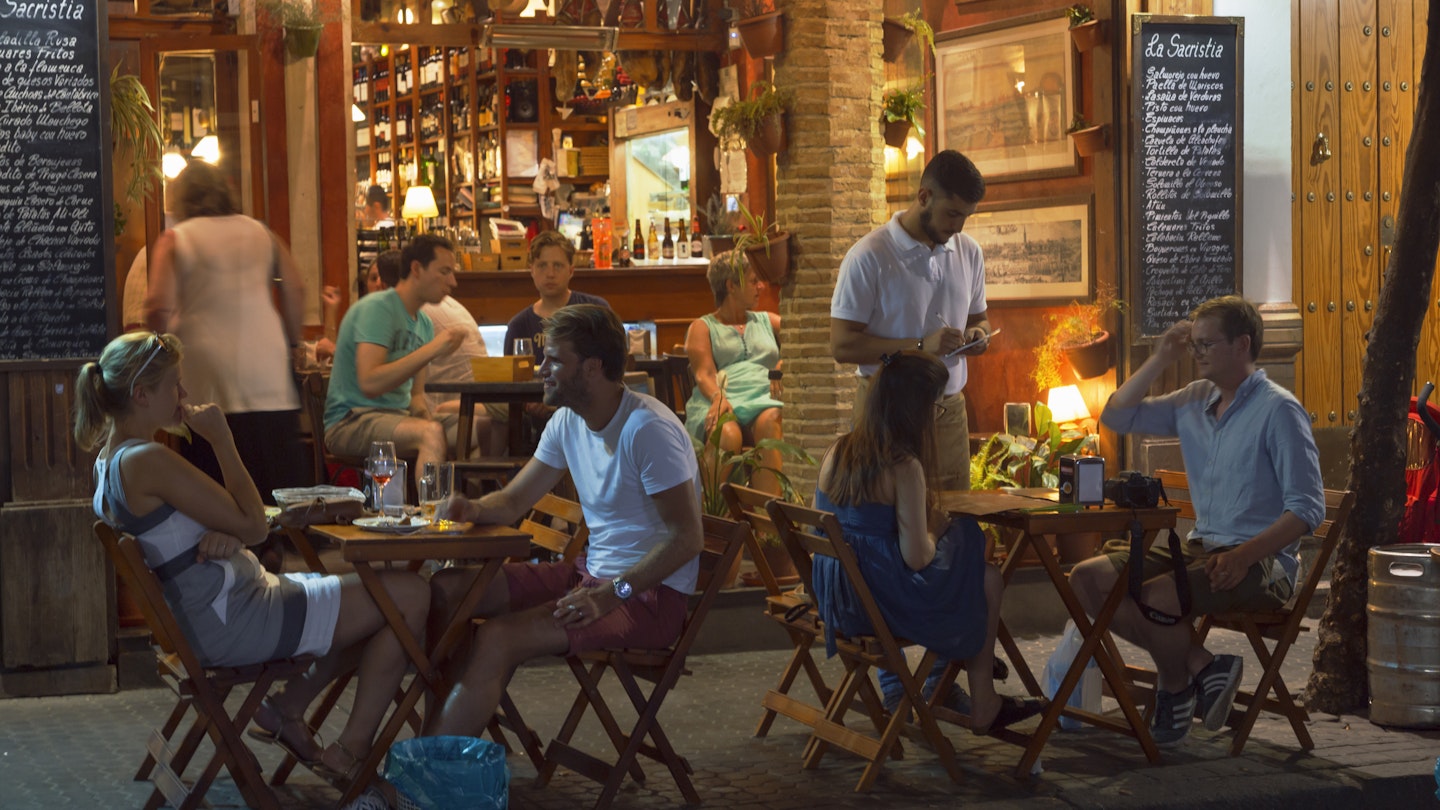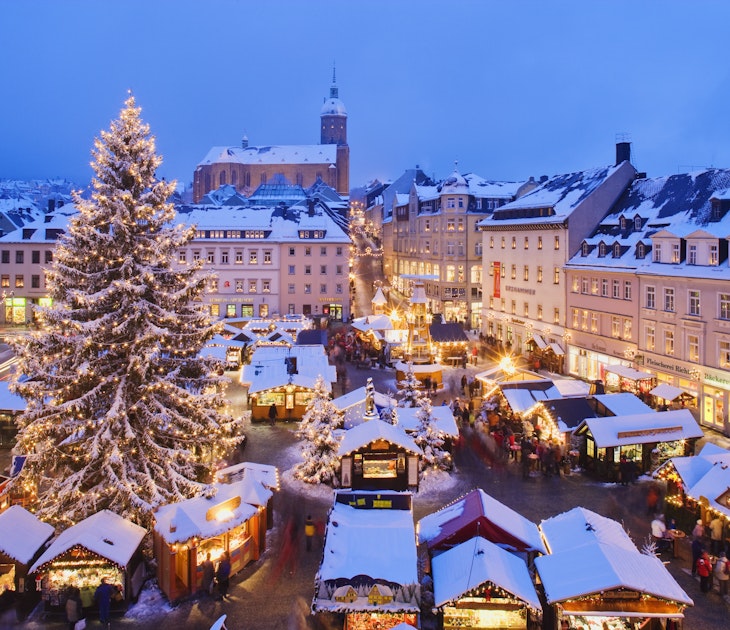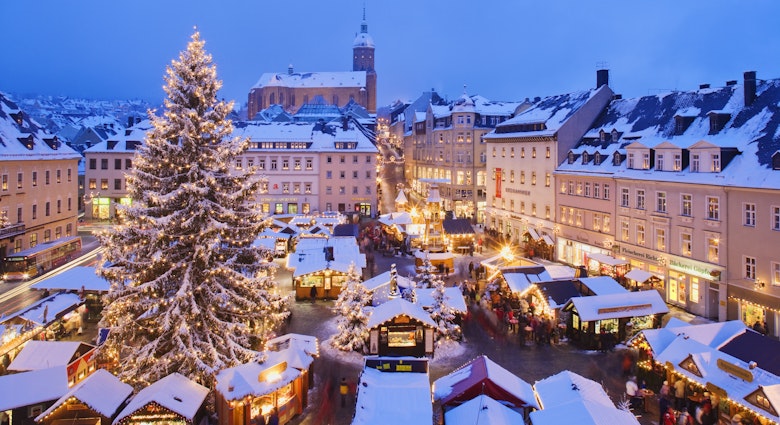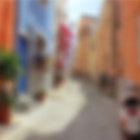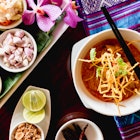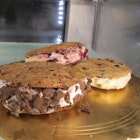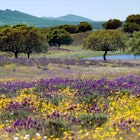Even the biggest fans of Michelin-starred restaurants and fine dining have to admit that in Seville, it’s all about the tapas. You may well have your best - and certainly most memorable - meal standing elbow-to-elbow with Sevillians in a packed bar.
Andalucía’s fiery capital has long been renowned for its tapas and still today the evening tapeo (tapas bar crawl) is central to much of the social life in the city.
But where is the best place to go to have an authentic Seville tapas experience? What can you expect to eat, and what’s the unspoken etiquette in those thriving tapas joints? Here’s our guide to Seville’s tapas scene.

What exactly are tapas?
Tapas are essentially small plates of savory food. Originally they were simple snacks served with drinks – a bowl of olives, perhaps, or a slice of tortilla – but over time they have become increasingly elaborate. Nowadays, some tapas resemble micro-portions of refined restaurant dishes. In fact, the term tapa (the singular of tapas) is more an indicator of a dish’s size than its content. It’s a great way to try a variety of dishes, often ordering several to share between friends. The popular ones will be ordered again (“ponme otro!”).
According to culinary legend, the tapas concept dates back to the 13th century when King Alfonso X ate small morsels of food with his wine, apparently on his doctor’s orders. Others claim it derives from the habit of farm laborers to eat snacks during long days in the fields. The name tapa – which means lid or cover in Spanish – is said to refer to an incident in the early 20th century when a Cadiz waiter placed a slice of jamón (ham) over a drink ordered by King Alfonso XIII, to keep the dust (or flies) out.
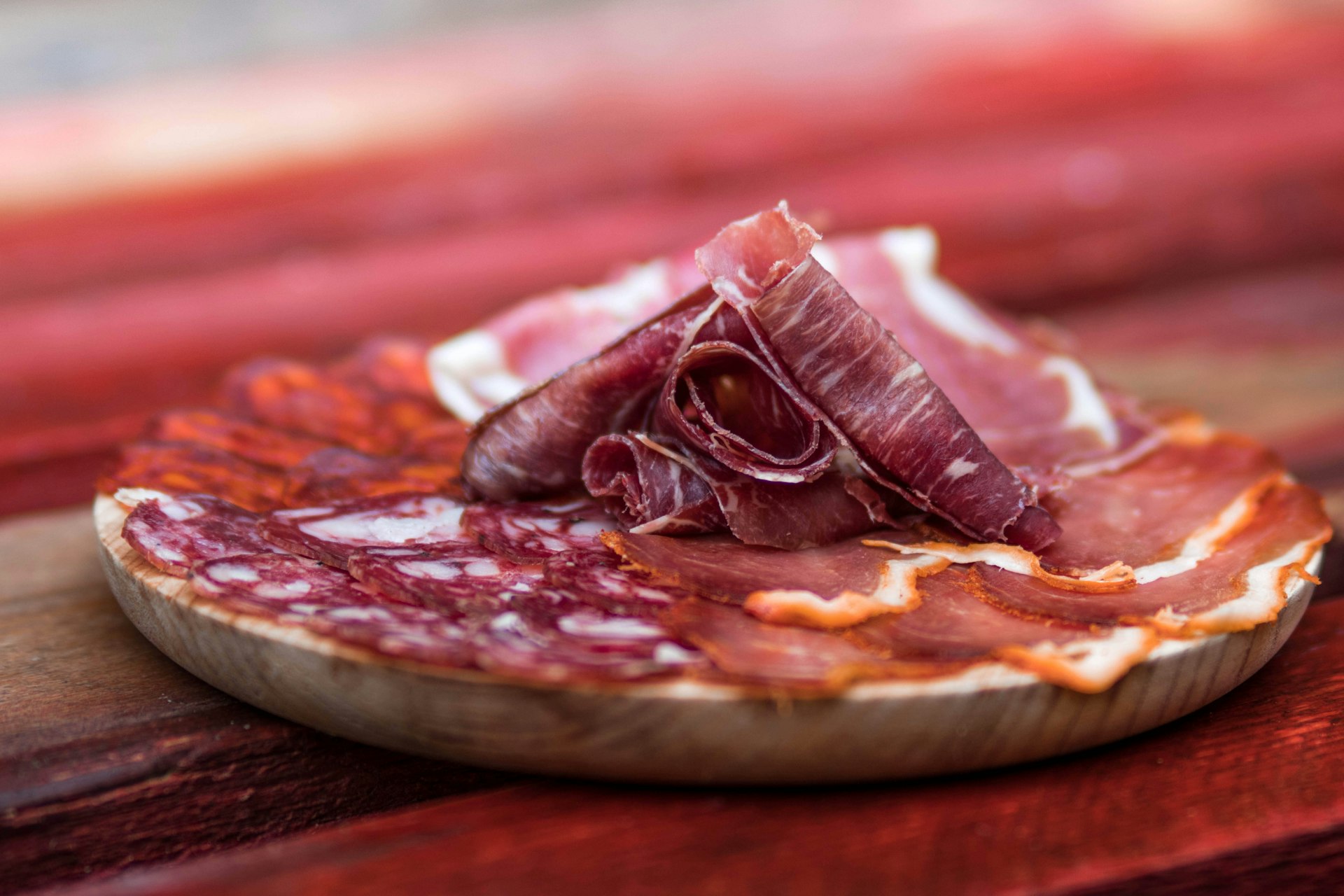
Which tapas are unique to Seville?
Ham is an perennial local favorite – you’ll see a leg waiting to be carved behind many bars. The most prized variety is jamón ibérico de bellota, from pure-bred acorn-fed pigs raised in the oak-lined dehesa (meadows) of the Sierra de Aracena. Another typical Sevillano meat tapa is solomillo al whisky, pork loin in whisky sauce.
Cold soups are a much-loved Andalucian speciality that appear on menus in spring and summer. The best-known is gazpacho, a refreshing blend of tomatoes, peppers, cucumbers and garlic, usually served in a glass. A variation is salmorejo, a thick, creamy tomato soup garnished with cubed jamón and boiled egg. This is more filling, and a bowl makes a perfect lunch on a hot day; beetroot and avocado are popular modern variations. Another good option for vegetarians is ensaladilla – Russian potato salad – though you should always double check that tuna hasn’t been added.
Seville’s multicultural past – Jewish and Islamic – can be detected in several tapas. Two standout examples are espinacas con garbanzos, a wholesome vegetarian combo of spinach, chickpeas and cumin, and berenjenas fritas con miel, soft creamy aubergines fried and topped with cane syrup.
Pescaito frito (fried fish) is one of several popular seafood tapas. Originally developed by the city’s Jewish community, it’s now a traditional staple of the annual Feria de Abril fiesta.
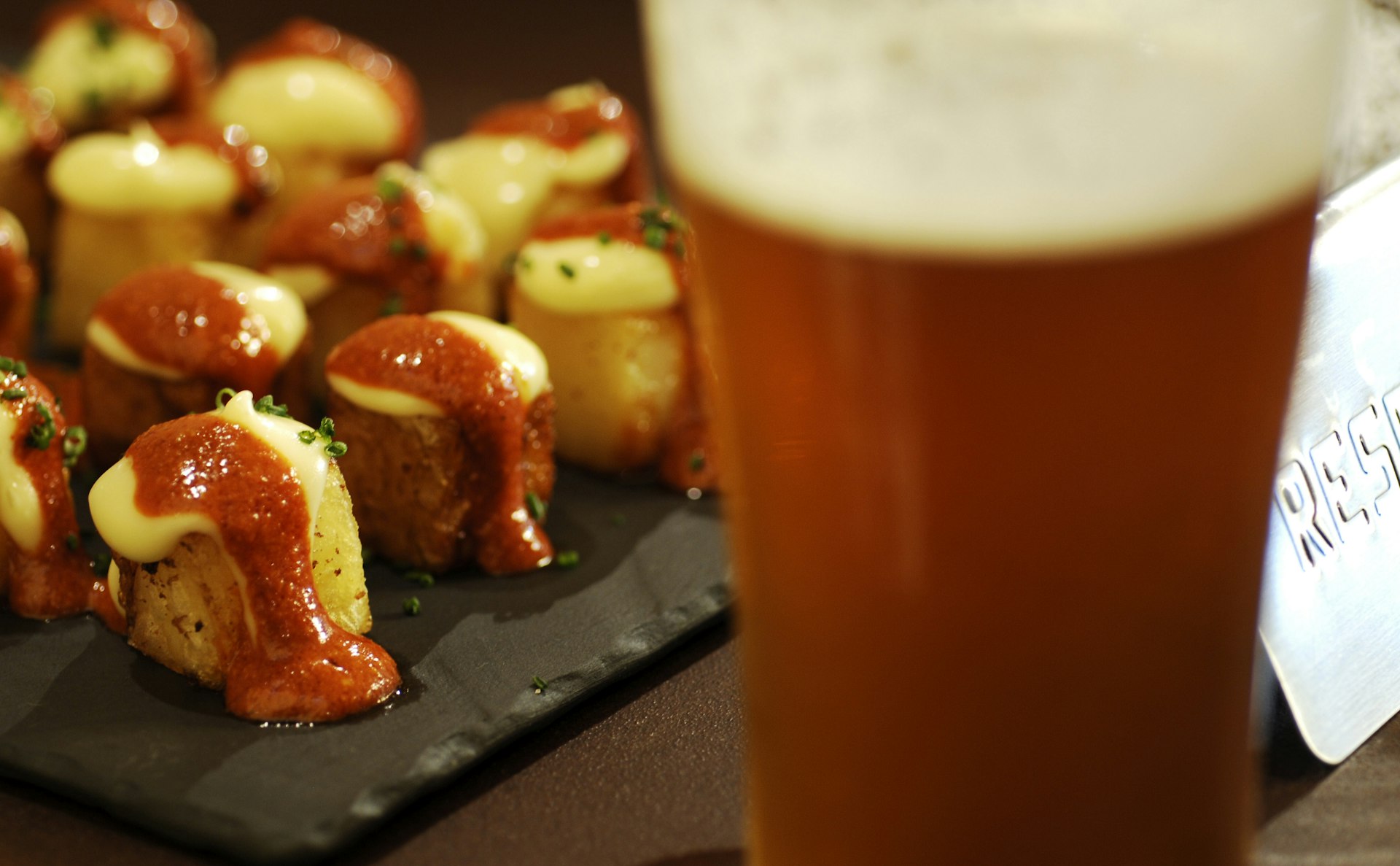
Classic drinks that go with tapas
There are no hard and fast rules, so it’s very much a case of whatever you fancy. Sevillanos are enthusiastic beer drinkers, and you’ll rarely go wrong ordering a caña (small glass) of the local brew, Cruzcampo. These days many places serve local craft beers - look out for Mond, Guadalquibeer or Zurda.
For something more refined, dry sherry from nearby Jerez pairs well with many tapas. Try a glass of chilled fino with olives and ham or a manzanilla with a plate of buttery grilled calamari (squid).
Wine is a good choice too, as Spanish wines are excellent; for a lighter option, one of Seville’s most popular summer drinks is tinto de verano, a Sangria-like mix of red wine and lemonade (or club soda, for a less sweet version) served over ice – perfect on a hot day. Bear in mind that bars and restaurants are always happy to dispense free chilled tap water, which is completely safe to drink.
What is a tapas bar like to visit?
The classic model comes with rows of hams hanging over the bar, ceramic tiling, and fading bullfighting posters on the walls. It might have a few token tables or upturned barrels, but it’ll be mostly standing room only. Tapas, typically costing around €3-5 a shot, will be listed on menus accessed by QR codes, or blackboards.
Alongside these traditional establishments, there are many smart gastro bars – gourmet tapas is now a firmly established sector in the city. Tapas served at these places will be more sophisticated, typically featuring premium seasonal ingredients like blue-fin tuna, daring flavor combinations, and global influences (Morocco, south-east Asia, Mexico, Peru). They’ll be prepared with surgical precision and arranged like mini works of art, with a corresponding price tag – €4-7.
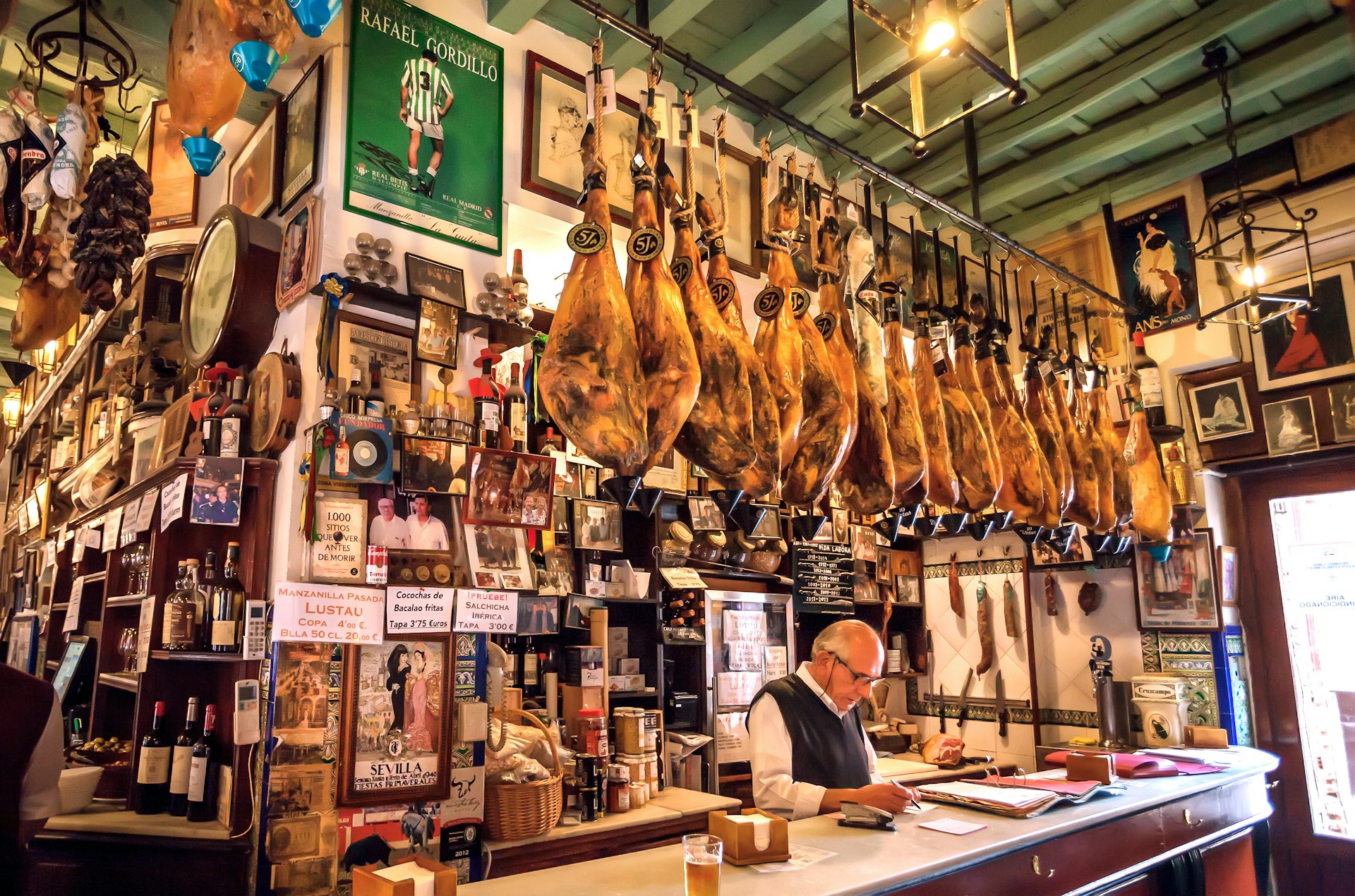
How to order tapas like a local
Eating tapas is a wonderfully casual way of dining out, but to do it right there are several aspects you’ll need to know about.
First is the timing. Sevillanos tend to eat relatively late – bars serve food from around 1pm through to 4pm and then in the evening from 8pm to 11.30pm or midnight.
Then there’s the ordering, which requires a little more know-how than the average restaurant. If you’re standing, as tradition dictates, you’ll need to order at the bar. Try to avoid the rookie mistake of ordering too much. Old hands will take it slow, ordering a drink first, then mulling over the menu before asking for a single tapa or possibly two. When they’re finished, they’ll either order more or move to another bar.
If you’re sitting at a table – and many places now offer tables and waiter service – eating presents fewer logistical problems, and you might opt for a more substantial meal. In some places tapas are also available in larger sizes, as either media raciones (mid-sized portions) or raciones (full-plate servings).
As a general rule, pay at the end, either directly at the bar or to your waiter. Be aware that at some places, if you sit outside on the terrace, you can only order media raciones or raciones – check the menu, or ask the wait staff.

The best neighborhoods in Seville for tapas
The success of a tapas bar crawl depends on having plenty of bars within easy walking distance of each other. Fortunately, Seville is ideally set up with clusters of bars in its central neighborhoods.
Close to the cathedral, the Barrio de Santa Cruz boasts a number of tapas bars, many in the tightly-packed streets around Calle Mateos Gago. One such, Café Bar Las Teresas, is a textbook old-school bar known for its jamón iberico and sherry. Over on the other side of the cathedral, Sal Gorda in Alfalfa cuts a more contemporary dash with its low-key decor and fusion tapas.
A ten-minute walk northwest of the cathedral, La Brunilda in the Arenal district is another of the city’s new breed of gastro bars. Since opening in 2012, it has built a stellar local reputation on the back of its inventive culinary approach.
Heading north towards the bar-heavy Alameda de Hércules area, La Azotea makes for a stylish stop-off with its minimalist look and much-lauded modern dishes. To finish up on a traditional note, head up to the Mercado de Feria east of the Alameda. The city’s oldest market, it’s a wonderful spot for some tasty fish tapas.
You might also like:
8 best neighborhoods in Seville for flamenco, tapas and Moorish architecture
The 9 best museums in Seville for art, archaeology, and flamenco
Escape the heat in the 7 best parks in Seville
.jpg?auto=format&w=64&h=64&fit=crop&crop=faces&q=75)
